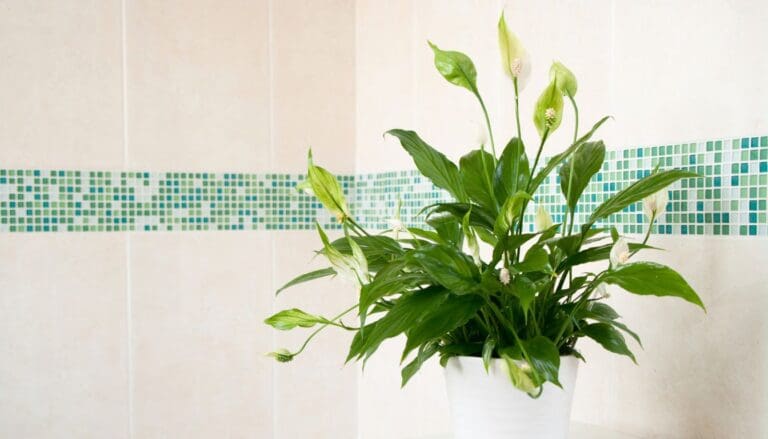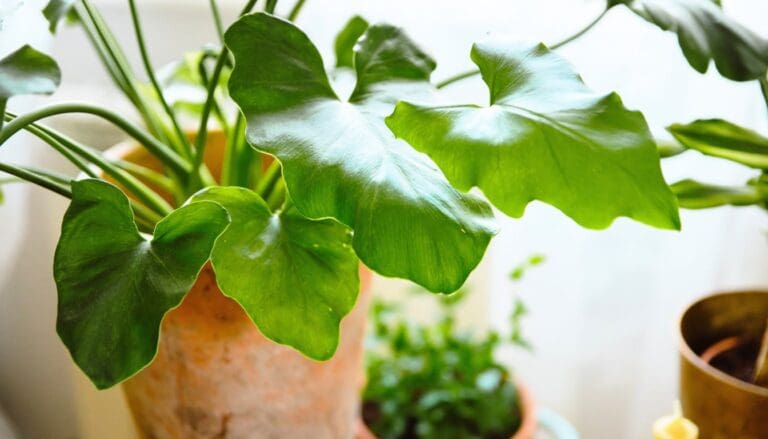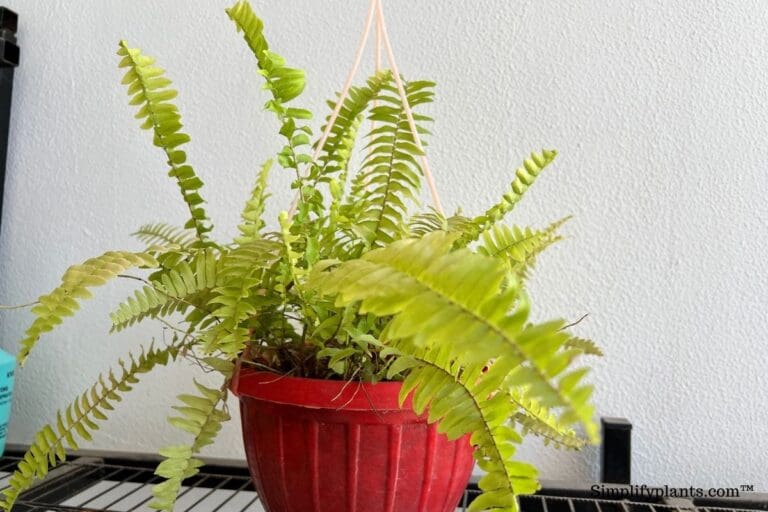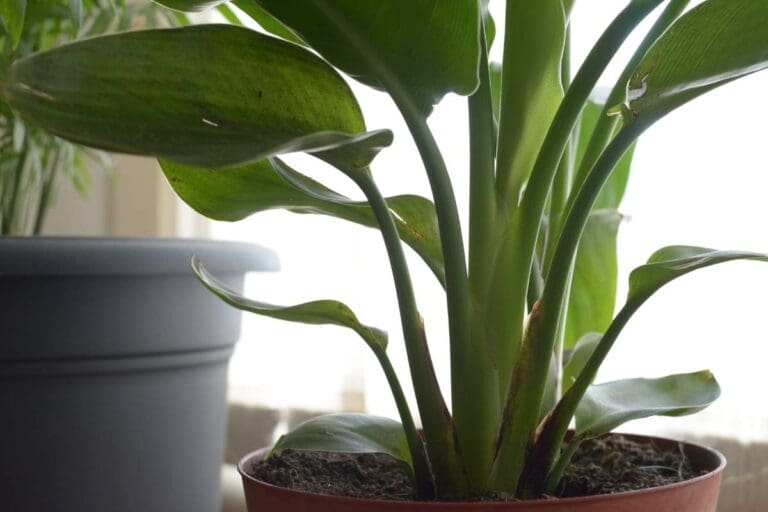Do Jade Plants Like To Be Misted? (+Humidity requirements)
Jade plants are succulents naturally living in semi-desert areas. They are most comfortable in such conditions, and if they are kept in high humidity, they may react adversely. But can we mist out the jade plant? Is it good for them? Let’s find out!
Being a succulent, jade plant shouldn’t be misted at all. If we mist our jade plant, it is likely to make the foliage wet, resulting in root rot and pest problems in them. Jade plants thrive at an average humidity level of 30-50%, and we must help the plant maintain the same.
Jade plants take time to dry out in humid conditions, leading to fungal and bacterial growth.
Jade plants may have yellow leaves, leaf spots, and leaf drop due to misting and high humidity. If kept in such conditions continuously, they can succumb to death.
Many enthusiasts mist it as a gesture of love, expecting healthy and glossy leaves. But, unfortunately, this can become a severe problem for your jade plant.
We have covered all your doubts and queries regarding the jade plant’s humidity and misting requirements. We will also discuss solutions to maintain ideal humid environment around them.
Let us read further to understand why they don’t like high humidity and what you can do about it.

Please note: Simplify Plants is reader-supported. Some links in the post are affiliate links and I get a commission from purchases made through links in the post.
Does Jade need misting?
No, jade plants do not like to be misted. Misting is usually done to raise the humidity around the plant and to keep the leaves clean. Here, with a jade plant, this may work against them.
When jade plants are regularly misted, the humidity around them increases, leading to leaf infection. It can also cause weak root development, and slowly the plant may die.
Jade plants are succulents, as they store water in their thick-walled leaves. However, when we mist, the water droplets sitting on the leaves dry out slowly.
Due to excess moisture on the leaves, they develop browns and black spots. Unfortunately, this also gives a proper environment for fungal and bacterial growth.
Also, misting creates a moist environment around them, increasing the chances of pest manifestations, bacterial and fungal diseases.
Infections are commonly seen at the junctions of branches and leaves. This makes the stems and leaves turn yellow over time.
Many planters mist their jade plant as an alternative to watering or skip watering, wondering that the plant has met their water needs.
As a result, the plant has bare soil and gets water droplets in scattered amounts. Unfortunately, this is even more harmful to the plant’s health.
Thus, misting can create several problems for your jade plant. This is why it is advised to avoid misting them or misting very occasionally just to clean their foliage.
Note
However, there is one exemption to this condition; you can mist young jade plants which are being propagated. However, they should not have developed roots wholly; otherwise, the roots may become weak.
You can mist them when it feels dry, only till the roots have developed fully. Then, provide your jade plant with proper light to boost its growth.
Does jade plant like humidity?

Jade plants do not appreciate humidity. Jade plants typically grow in arid and dry climates where water is scarce.
Humidity range from 30% to 50%, is just perfect for your desert growing jade plant.
Usually, average homes have a humidity of around 50%, which should be ideal for your jade plant. They are tough and flexible to various conditions, but it is still advised to keep them in areas with low humidity.
Humidity affects jade plants, and they can easily succumb to root decay brought about by high humidity.
In addition, fungi easily thrive in a humid environment, making it harder for your plant to prevent rot.
High humidity conditions, when combined with poor air circulation, can be deadly for your jade plants. In addition, if they are living in this condition for longer periods, they will soon be prone to rot.
When your jade plants get root rot, they find it hard to draw and absorb nutrients from the soil.
How to check the humidity level of your room?
You should check the humidity level in the space to make sure it is perfect for your plants. But what is humidity? Let’s see. Humidity is the amount of water vapor present in the atmosphere.
You can quickly check humidity by using a hygrometer. A hygrometer is a device that helps to measure the humidity and temperature of an area. It is cheap and works great for measuring humidity and temperature.
Owing a hygrometer will make your work a lot easier. Try buying one and use it for your plants. They are easy to use and will give correct figures.
Do jade plants need high humidity?
Being succulents, jade plants prefer humidity ranging between 30% to 50% around them. They love areas with less humidity and will not complain even if you keep them dry for a little longer.
As the humidity level goes up, the plant gets a little uncomfortable. However, you can keep them in high humidity for a short period.
If you plan to set them in an area with high humidity for long periods, you might soon stress them.
Keep an eye on your jade plant, especially when the humidity level is ideal. If they seem weird, immediately take proper steps to soothe them.
Signs you jade plant needs lower humidity levels

Jade plants may show some signs to tell you that they do not appreciate the humidity around them. This is because high humidity makes it harder for the jade plant to cool off, as they cannot evaporate excess water.
The leaves are already storing water, and they do not need excess water on them. They will indicate stress through the following signs:
- Yellow leaves
- Black spots
- Brown leaves
- Fungal growth
- Leaf drop
These signs should be taken seriously and not considered temporary. Jade plants can survive most of the conditions, but excess water and humidity are the only exceptions.
High humidity will block their leaves and stems, making transpiration challenging. After a point in time, the soil will also suffer as the plant and soil remain moist all the time.
Doing the right thing and keeping them in the right conditions will never go wrong. Even if one condition is not suitable, if other things are balanced, the plant will still survive.
We have tried a few things to fix this problem and maintain a perfect environment for your jade plant.
How to maintain low humidity around the jade plant?

You can do a few things to maintain a low humidity level around your jade plant. We don’t intend to go below 30% humidity; it won’t harm them but is not required.
Also, if you have no other option but to keep your jade plant in an area with high humidity, we have got your back.
Give your jade plant enough sunlight. It can be both direct and indirect. For someone with regular jobs, it gets harder to give them both kinds of light.
Moving your plant from one place to another for the right lighting is also not practical and tiring.
If you need one perfect spot for your jade plant, you can do the following things to compensate for high humidity.
- Place your jade plant in window sills to catch some morning and late afternoon light, perfect for reducing the humidity.
- Check for the window that gets morning sun, and keep your jade plant there without a second thought.
- Use artificial light sources such as grow light, especially during winters, as the humidity might rise when the sunlight is dim. It will keep the humidity low and also fulfill their light needs.
- Keep your jade plant in an area with good air circulation. You can use a dehumidifier. It works excellent to suck the humid air from the air and blowback dry air.
- Avoid excess watering your jade plant in any condition. During winters, do not water them until fully dry.
- Use a well-draining potting medium to grow the jade plant. It will also cause excess water to drain faster and prevent soggy and moist soil. Also, avoid planting them in glass pots or pots with a poor drainage system.
- During the rainy season, move your jade plant away from the rain.
Also read: How Much Light Do Jade Plants Need?
Best spot to keep the jade plant for low humidity
The most suitable spot for keeping jade plants would be on the window sill. They should get direct morning sun and indirect sun for the entire day in this spot. So choose the window which fulfills their light demands.
It helps in two ways, firstly it fulfills the light demands of your jade plant and keeps the humidity low around them.
You can also use grow light to fulfill their light needs. Keeping your jade plant at a safe distance from grow light will keep the humidity level low around them.
Choose a spot for your jade plant where it can get enough light with proper air circulation at a reasonable range from other plants. Keeping them with other tropical plants can raise the humidity around them, so you must avoid the same.
No matter where you keep your jade plant, the ideal spot is an area with decent light and sound ventilataion.
Also read: Where To Keep Jade Plant(ideal placement)
Why is it important to keep low humidity around the jade plant?

Jade plants are used to living in arid and dry climates due to their natural habitat. They are used to heat, low humidity, and ventilation.
The roots and stems of jade plants absorb moisture from arid soil and stock every drop for long periods.
Jade plants are vulnerable to a humid and moist environment. This is because the leaves and stems cannot draw and absorb nutrients from the soil when the soil remains moist for long. Excess moisture sitting on the leaves also gives birth to fungus and bacteria.
Due to high humidity, the fungi and bacteria growth takes place. The plant has no other choice but provides perfect conditions for root rot to develop.
Since they are vulnerable, they cannot resist root rot, fungal infections, and bacterial diseases.
They will show signs of distress due to high humidity through leaf yellowing, brown tips, brown leaves, curling, leaf drop, and eventually perish.
Final words
- We have learned through this article that jade plants do not like humidity. They are sure to react adversely to high humidity conditions.
- You can mist jade plants occasionally to clean the leaves and foliage. However, misting them regularly can lead to yellowing of leaves, fungal growth, and leaf spot.
- You can also use ways to lower the humidity around them by keeping them in a spot with good light and good ventilation.
- You can use a hygrometer to determine the humidity of a particular space. Using a hygrometer will give you correct figures and help you to maintain the ideal humidity level around your jade plants.
- To facilitate low humidity around jade plants, avoid excess watering them, avoid keeping them outdoors during winters, and grow them in a well-draining potting medium.
- Jade plants will add value to your space if kept in warm and dry conditions. They do not ask for more.
Source: NYBG, The University of Arkansas, University of Florida, Phytochemical and Antimicrobial Activity of Jade Plant, CABI, University of Minnesota, The University of Missouri.
Recommended Garden Supplies
| Product Image | Our Recommended Gardening Supplies | Check Offers! |
|---|---|---|
Top Top
Top
Top
Top
Top
Top
Top
Top | rePotme Houseplant and Tropical Classic Potting Soil Mix | Check Offer On Amazon |
 Top
Top
Top
Top
Top
Top
Top
Top | Espoma Organic Indoor Plant Food | Check Offer On Amazon |
 Top
Top
Top
Top
Top
Top
Top
Top | GooingTop LED Grow Light 6000K Full Spectrum Clip Plant Growing Lamp | Check Offer On Amazon |
 Top
Top
Top
Top
Top
Top
Top
Top | Soil Moisture Meter | Check Offer On Amazon |
 Top
Top
Top
Top
Top
Top
Top
Top | Govee Hygrometer Thermometer, Bluetooth Enabled! | Check Offer On Amazon |
 Top
Top | LEVOIT Humidifiers for Large Room(Best For Plants) | Check Offer On Amazon |
 Top
Top
Top
Top
Top
Top
Top
Top | Upgraded DIY Automatic Drip Irrigation Kit, 15 Potted Houseplants Support | Check Offer On Amazon |
 Top
Top
Top
Top
Top
Top
Top
Top | Stainless Steel Heavy Duty Gardening Tool Set | Check Offer On Amazon |
 Top
Top
Top
Top
Top
Top
Top
Top | Bonide Insecticidal Soap | Check Offer On Amazon |
 Top
Top
Top
Top
Top
Top
Top
Top | Bonide 32 oz Spray Neem Oil for Organic Gardening | Check Offer On Amazon |
 Top
Top
Top
Top
Top
Top
Top
Top | Garden Safe Fungicide | Check Offer On Amazon |






